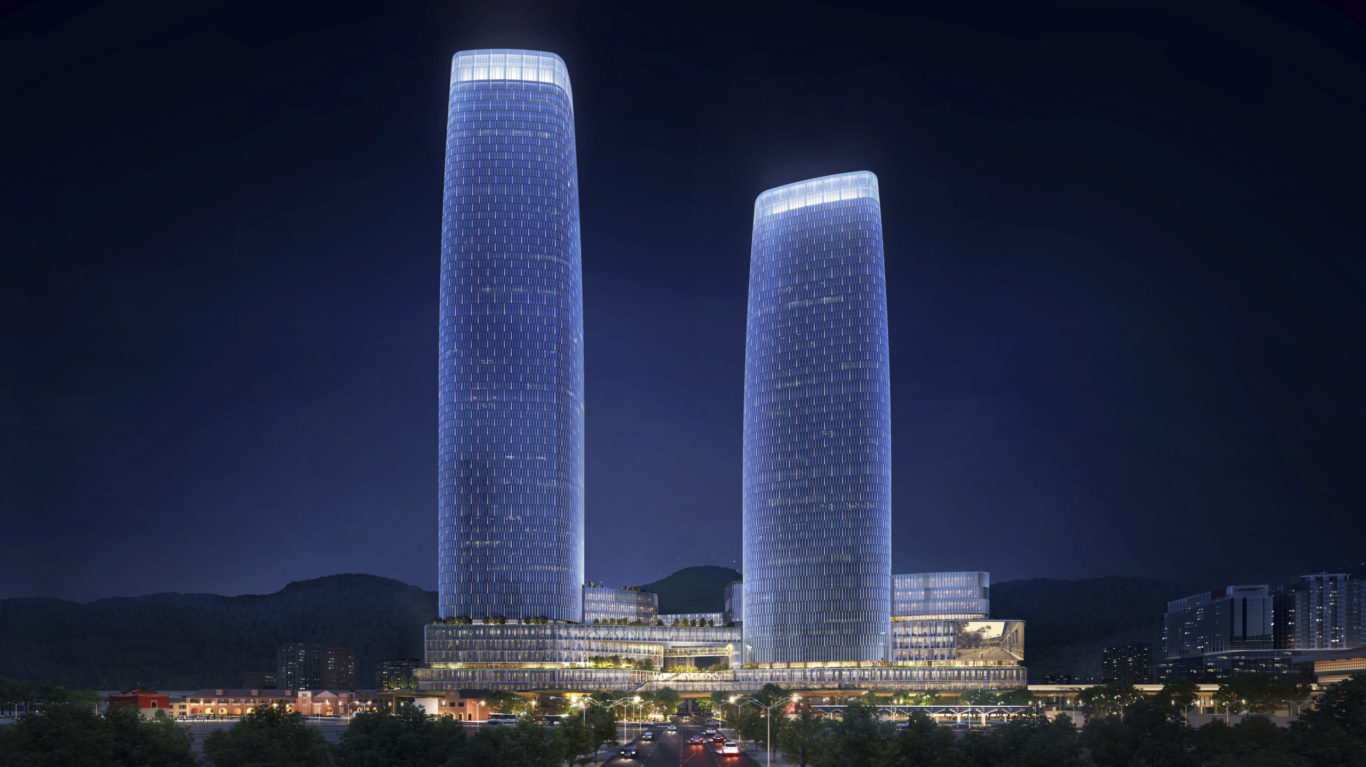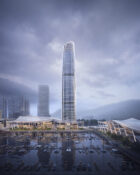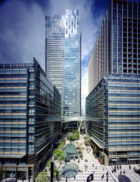A public-spirited place
Located adjacent to Old Taipei City’s historic entrance, the North Gate, the Taipei Twin Towers are envisioned as a new gateway to Taipei. It is designed as a public-spirited destination that is inspired and enriched by the local culture.
The development features an elevated promenade, multiple garden terraces, shopping arcades, a hotel, office space, and a series of cultural venues—collectively referred to as the Living Room. At the heart of the complex, an open-air, monumental stair forms a natural amphitheater overlooking the park to the south. To the north, multiple viewing terraces offer spectacular vistas of the Qixing Mountain, the highest peak of the Taipei Basin.

Open to the public, the 12-story podium has outdoor space on every level, which can be traversed from the park up to the highest viewing terrace without entering the building. Landscaping on the terraces mirrors the native sequences and rich agricultural traditions of the Taipei Basin, including fragrant gardens, tea terraces, and forests.
The flared shape of the podium enables public events to span across multiple levels. At the top of the amphitheater stair, an oculus frames the view upward to the towers and the sky. A lightweight, retractable roof above the oculus can be used to temper the environment of the Living Room below.
Taipei Twin Towers aims to achieve high performance certifications from LEED, WELL, and EEWH, Taiwan’s comprehensive green building rating system.







